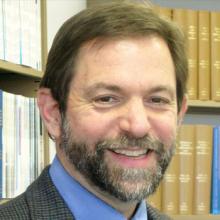Each month, the AMA highlights institutions that are part of the AMA Accelerating Change in Medical Education Consortium to showcase their work with the consortium and innovations in medical education.
Featured institution and leadership
Jeffrey Borkan, MD, PhD
Assistant dean for primary care–population medicine and chair/professor and chair of family medicine
Warren Alpert Medical School of Brown University
Number of years in the consortium: 10 years
What are your Accelerating Change in Medical Education project and goals?
The Primary Care–Population Medicine Program at Brown University (PC-PM), the first of its kind, awards both a medical degree and a Master’s of Science in Population Medicine, and aims to seamlessly integrate health systems science (HSS) with the basic and clinical sciences over the 4 years of medical school. It prepares students for a career in medicine while providing comprehensive training in population medicine. The program consists of 9 integrated courses in HSS, research methods, patient navigation, leadership training, a 3rd year Longitudinal Integrated Clerkship (LIC) and a thesis requirement.
The program’s goal is to train medical students to become physician leaders (what we call “clinicians plus”) equipped to promote the health of the patients, communities, and population they serve. In addition, it provides the basis for them to be educators, researchers, and activists. The first class of 24 students enrolled in 2015 and 71 students have completed the training.
What are some recent accomplishments that would be of interest to others in the medical community?
The PC-PM Program has drawn a diverse student body who have had a flexible, adaptive approach to their education that encourages self-direction and tolerance of ambiguity. Anti-racism content has been introduced by the students as well as an ever-deepening focus on social determinants of health. PC-PM students have been leaders, productive scholars, educators and advocates/activists at AMS. 95% (71/75) of students in the first 4 years of the program have successfully completed both their Medical and ScM degrees. There have been no differences in Shelf Exam scores between PC-PM students and those in the traditional program.
Over 50% of PC-PM graduates have gone into primary care residencies in the first 4 years; more than double the overall Brown rate. Seven students have entered Brown primary care residencies through the “guaranteed track.” PC-PM has also had positive “halo” effects on the traditional medical school program. We have introduced HSS through a course in the first semester (Health Systems Science I) for all medical students, not just those in the PC-PM program, and started a patient navigator program.
How has your work prepared you to respond to disruptions related to COVID-19?
The response to COVID-19 helped underline the desperate need to increase systems thinking and competencies into health care and the requirement to integrate public health, population health and medicine.
For example, who would have guessed that all physicians, practices and health systems would need to be aware of supply chain issues around personal protective equipment (PPE) and that our failures in this critical systems area would lead to untold morbidity and mortality for patients and health care workers alike? Similarly, we as a society have paid the price of chronic underfunding of public health and its siloing away from medicine
What do you think will change about medical education in the next five years?
We anticipate students taking more of an active role in the content and method of delivery of their education as they prepare for roles as clinicians, educators, researchers, activists and beyond. Part of this will be individualized, personalized precision medical education, as well as a movement beyond time-based requirements. Integration between UME and GME will hopefully accelerate with linkages to life-long-learning.
In addition, we expect that HSS will become ever more recognized as the 3rd science of medicine that is required for successful functioning in the health care system of today and tomorrow.
Can you share some strategies to maintain team engagement and well-being in this challenging time?
We have worked to maintain team engagement throughout the last few years with scheduled meeting in person or by Zoom–and teaching in person when COVID allows. Flexibility and quickly reactions to developments has been a key strategy. Nothing makes up for in-person interaction, and we look forward to more of this in the future–though likely in a “hybrid” environment.
Table of Contents
- Featured institution and leadership
- What are your Accelerating Change in Medical Education project and goals?
- What are some recent accomplishments that would be of interest to others in the medical community?
- How has your work prepared you to respond to disruptions related to COVID-19?
- What do you think will change about medical education in the next five years?
- Can you share some strategies to maintain team engagement and well-being in this challenging time?




